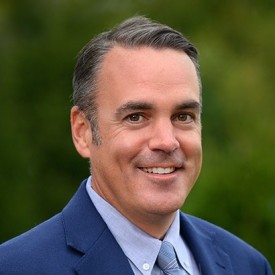Using Data Analytics to Enhance Patient Engagement, Outreach
Community Health Network leveraged data analytics solutions to reduce appointment no-shows, conduct post-discharge outreach, and improve patient engagement.

Source: Thinkstock
- To ensure quality care delivery, patients must be active participants in their own health and well-being. Patient engagement is a critical part of the healthcare industry, and it’s essential for entities to keep patients involved in care processes.
At Community Health Network, an integrated healthcare system with five main hospitals, leaders recognized the importance of patient engagement strategies. Through a partnership with CipherHealth, the organization leveraged several data analytics solutions to automate care delivery methods and increase patient outreach.
“We've been a partner of Cipher for a couple of years now, and the pandemic really accelerated our partnership,” Patrick McGill, MD, EVP and chief analytics officer at Community Health Network, told HealthITAnalytics.

“We needed to offload some of the work from our caregivers so that they could focus on pandemic-related activities instead of hospital discharge, call-backs, or appointment reminders. One of our mantras is that every patient's last mile is unique to them. We try and create those individualized journeys to the last mile.”
Appointment no-shows were a major area of focus for McGill and his team.
READ MORE: Tech Companies Aim to Expand Use of Data Analytics in Healthcare
“If patients aren't coming to their appointments, then we can't give them excellent care. We had a very clunky, unautomated process for appointment reminders. So, we started sending text messages for appointment reminders,” McGill said.
“We're soon going to implement two-way communication so that if a patient needs to cancel or reschedule, they can do that right off of the text message. We’re also working to develop a feature where we can offer patients on-demand virtual visits right there in the text messages if a patient cancels an appointment.”
The health system aims to ensure they meet patients where they are, in a way that’s convenient for the individual.
“Whether patients need a phone call, or an automated call, or a text message, we try to figure out how to drive the outreach to the patient. We want to meet their needs while improving clinical outcomes and quality,” McGill explained.
“We’re trying to meet all of their needs in a seamless way, and we try to recreate the experiences that people have throughout their lives outside of the healthcare space. I always joke and say, ‘When's the last time you called a restaurant to make a reservation,’ because nobody does that anymore. We’re trying to create those experiences that are similar to the rest of our lives.”
READ MORE: How Data Analytics Can Help Manage Intensive Care Unit Capacity
In addition to a new platform to reduce appointment no-shows, Community adopted solutions to automate post-discharge outreach and optimize nurse leader rounding.
“We’ve implemented various solutions to alleviate provider workloads. The biggest barrier that we had with implementation was that we had started several pilots in different areas with each solution. So, we had to spread the solutions to create uniformity across the organization,” he said.
“Spreading the technology was fairly straightforward, because we weren’t trying to retrofit technology into a bad process. We had the processes, so it was just a matter of leveraging the technology to automate them.”
Leaders aimed to implement platforms and tools that would create a simpler approach to care delivery, across all areas of care.
“With the hospital follow-up solution, our discharge staff came to us and said, ‘We want to transition to something automated.’ So, we launched that in June – in the middle of the pandemic – and that was very successful, especially with COVID-19 discharges and other patients leaving the hospital,” McGill said.
READ MORE: How AI Chatbots Can Boost Patient Engagement, Care Experience
“We've expanded the nurse leader rounding tool and into all of our care settings – specifically behavioral health, because we’re the largest provider of behavioral health services in central Indiana.”
While Community primarily focused on developing more seamless care processes, the health system also sought to address any social determinants of health they identified.
“With some of the social changes that occurred in 2020, we've been focused on hiring safety advocates as well as social accountability advocates. We call them our patient advocates. We’ll be using that nurse leader rounding tool for their documentation as they're rounding on patients to make sure that any racial or social needs are being addressed,” McGill noted.
“To make the appointment reminders smarter, we’ve leveraged the no-show predictive algorithm so that not every patient just receives a single text message. For patients that might be at higher risk for no-shows, they receive a unique outreach to make sure that they're going to confirm their appointment. If they don't confirm, we reach out to them to see if there's a need that they might have – transportation or otherwise – that can be fulfilled through other services that we offer.”
For McGill, the most important step in the march toward automation is finding the right partner.
“We usually start by looking at our current processes. We identify the gaps in our processes and where there are opportunities for automation and improvement. Once you’ve done that, you can try to find an enterprise partner to go on this journey with you,” McGill concluded.
“We value partnerships at Community. We wanted a partner with a solution that we could implement, but also a partner that we could grow and develop with. It's easy to go out and buy point solutions for readmissions, no-shows, or reminders, but you want to find the partner that's going to learn and develop with you. That's the key.”
